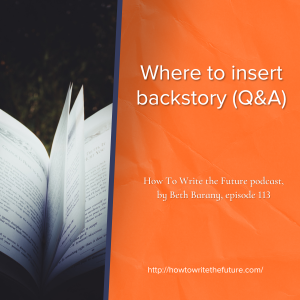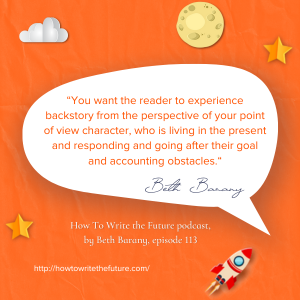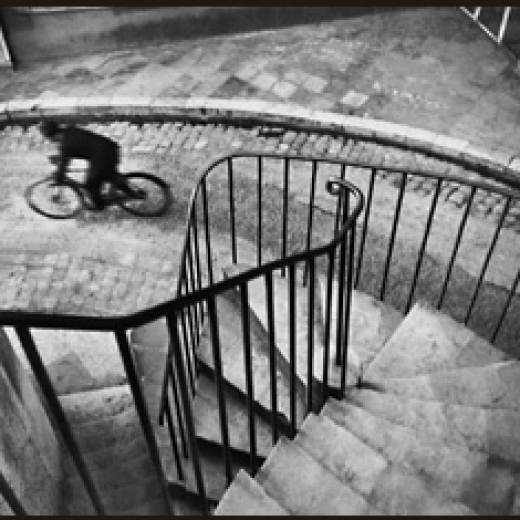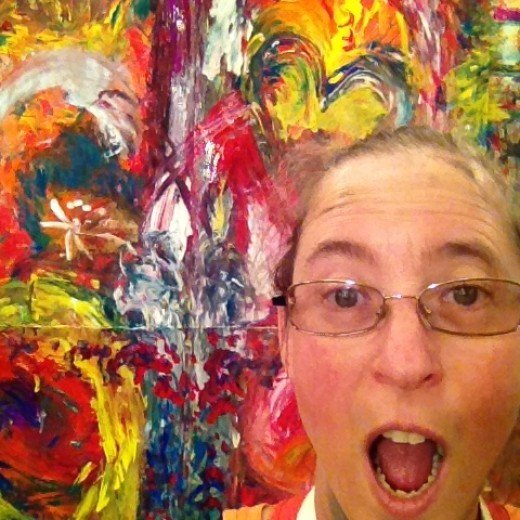Where to insert backstory (Q&A)
Where to insert backstory (Q&A) – How To Write the Future podcast, episode 113
“You want the reader to experience backstory from the perspective of your point of view character, who is living in the present and responding and going after their goal and accounting obstacles.“
In this podcast episode of How To Write The Future, host Beth Barany answers a question from a listener on where and how to add the backstory in your novel. Beth also shares about her “World Building Workbook for Fiction Writers” to help you develop compelling story worlds.
Platforms The podcast is available on Apple Podcasts | Buzzsprout | Spotify | Podcast Addict | Amazon Music | Youtube
RESOURCES
Free World Building Workbook for Fiction Writers: https://writersfunzone.com/blog/world-building-resources/
Sign up for the 30-minute Story Success Clinic with Beth Barany: https://writersfunzone.com/blog/story-success-clinic/
Get support for your fiction writing by a novelist and writing teacher and coach. Schedule an exploratory call here and see if Beth can support you today: https://writersfunzone.com/blog/discovery-call/
About the How To Write the Future podcast
The *How To Write The Future* podcast is for science fiction and fantasy writers who want to write positive futures and successfully bring those stories out into the marketplace. Hosted by Beth Barany, science fiction novelist and creativity coach for writers. We cover tips for fiction writers. This podcast is for readers too if you’re at all curious about the future of humanity.
This podcast is for you if you have questions like:
– How do I create a believable world for my science fiction story?
– How do I figure out what’s not working if my story feels flat?
– How do I make my story more interesting and alive?
This podcast is for readers too if you’re at all curious about the future of humanity.
Transcript for Episode 113. Where to insert backstory (Q&A)
Hey everyone. I’m Beth Barany. I’m your host for How To Write The Future podcast.
I am coming to you from beautiful balmy Oakland, California. This is the territory of the Huichin, part of the stolen land of the Chochenyo Muwekma Ohlone, the successors of the historic and sovereign Verona band of Alameda county.
I create this podcast, so I can share with you tips for writers and for anyone who cares about creating a positive, optimistic future.
Because I believe that what we vision and put into our stories, we can help make so in the actual world.
So if you’re up for that, come along and play with me.
[00:44] another episode of Q & A
Today is another episode of Q & A.
And this question came to me from someone who signed up for my World-building Workbook for Fiction Writers, which is a free workbook that I will share with you how to get at the end of this episode.
[00:59] Where to insert backstory
They wanted to know where to insert backstory.
Backstory is a challenging thing to handle in our stories.
Usually writers get to know their story, their characters, and their worlds so well that they want to share it. We want to share it.We want to share it with our readers because I have faced this problem as well where I have a lot of great, interesting backstory, but I don’t know where to put it. Or how to handle it.
So, over the years through much trial and error, I have come up with some tips for myself. And for you.
So I’m going to share them with you.
[01:38] Tips for handling backstory
Essentially, you never want to stop your story to give a memory, or a flashback, or have the action stop and have some piece of backstory relayed by the character.
Ideally, you want to keep the story going unless it is so critical that you have to stop the forward momentum of the story to relay. previous incident.
And there are some very specific times where it totally makes sense to do that. Essentially though you want the reader to experience backstory from the perspective of your point of view character, who is living in the present and responding and going after their goal and accounting obstacles.
And you want to drop hints about who they are and where they came from and things from their past.
How do you do that?
[02:25] Use a moment of memory
One of the best ways I know how to do that is have them recall something, have a memory.
Everything in our present day life relates– we usually always relate it to something that happened in the past.
[02:37] An example
A simple example could be:
Mary ran for the bus, something she had done every day for the last 10 weeks.
So there I’m telling a moment and even could be an opening moment of a story where we’re getting a sense of her present.
She’s running for the bus.
And her past.
She’s been doing it for the last 10 weeks.
I’m not going to stop the story and describe the bus and how it reminds her of some childhood bus. That isn’t probably relevant.
So most backstory. if it is going to show up, and stopping the action of your front story, it’s going to happen, someplace, in the middle, where you want to have a moment of reflection.
[03:16] Share only what is relevant
What triggers a memory?
Everything could trigger a memory for your character, but you only want to share what is relevant to the front action of the story. And also to give a little bit of context to the reader.
Another place to insert backstory is, in a moment of meeting somebody.
So say Mary meets a stranger on the bus.
And that in of itself is not that important. Probably. Meeting a stranger on the bus unless. Unless something about the stranger triggers a memory and also is important to the story. So that’s very, very key here.
Backstory needs to be in your story only if it’s very, very important. Meaning without this little bit of knowledge, the reader would be lost.
So I like to joke and say, share backstory on a need to know basis. We don’t need to know the whole lineage. We don’t need to know everything the person did before we met them on page one. Just need to know the most important details.
[04:17] How do you figure out the most important details?
How do you figure out the most important details?
Either you get an editor or beta reader or a critique partner to give you that feedback, which is very, very helpful when you don’t know. And I, I highly recommend somebody else give you feedback on your work, if you can’t figure it out. Or just be as minimal as you can. Try subtracting things when you’re in edits.
[04:37] To recap with example
All right. So again, to recap. With backstory, you only want to include what is most relevant, insert it in memory. So one thing could lead to another.
For example, if I have Mary meet the stranger on the bus. It could be:
A stranger sat down next to Mary. Mary paid no mind until the stranger spoke to her. Their voice sounded exactly like her ex-boyfriend, who she had just kicked out of her house. She scooted closer to the window to get away from this stranger. She didn’t even want to look at them.
Okay. So there’s an example.
Its action reaction.
She’s having a response, an emotional response. And it tells us something about her past, about her breaking up.
And if I were writing a romance, this would be very relevant information.
So keep it relevant to the kind of story that you are writing.
[05:29] Have questions?
All right. If you have any other questions about backstory, let me know. This is a wonderful juicy topic. And, maybe I could answer them in another episode.
[05:37] World Building Workbook for Fiction Writers
And if you would like to get your own copy of the World Building Workbook for Fiction Writers, then please check out the link that is in the description for this podcast or go to how to write the future. Dot com and there you will see how to get your own copy of the World Building Workbook for Fiction Writers.
[05:58] Thanks for listening and Rocket the Cat
All right.
That’s it for this week, everyone. Thanks for listening. Write long and prosper.
And Rocket wants to say something. Want to say something?
Rocket, want to say something? And you just want to be cozy. Cozy cat. He’s a cozy cat.
Loved this episode? Leave us a review and rating here: https://www.buzzsprout.com/2012061
ABOUT BETH BARANY

Beth Barany teaches science fiction and fantasy novelists how to write, edit, and publish their books as a coach, teacher, consultant, and developmental editor. She’s an award-winning fantasy and science fiction novelist and runs the podcast, “How To Write The Future.”
Learn more about Beth Barany at these sites:
Author site / Coaching site / School of Fiction / Writer’s Fun Zone blog
CONNECT
Contact Beth: https://writersfunzone.com/blog/podcast/#tve-jump-185b4422580
Email: beth@bethbarany.com
LinkedIn: https://www.linkedin.com/in/bethbarany/
IG: https://www.instagram.com/bethbarany/
TT: https://www.tiktok.com/@bethbarany/
FB: https://www.facebook.com/bethbarany
X: https://twitter.com/BethBarany
CREDITS
- EDITED WITH DESCRIPT: https://www.descript.com?lmref=_w1WCA (Refer-a-Friend link)
- MUSIC CREDITS : Music from Uppbeat (free for Creators!): https://uppbeat.io/t/soundroll/fuzz-buzz License code: UMMKDRL02DFGKJ0L. “Fuzz buzz” by Soundroll. Commercial license: https://musicvine.com/track/soundroll/fuzz-buzz.
- DISTRIBUTED BY BUZZSPROUT: https://www.buzzsprout.com/?referrer_id=1994465 (Refer-a-Friend link)
- SHOW PRODUCTION BY Beth Barany
- SHOW CO-PRODUCTION + NOTES by Kerry-Ann McDade
C 2024 BETH BARANY
For more “How To Write the Future” episodes, go here.
If you’d like to invite Beth onto your podcast, drop her a note here.





